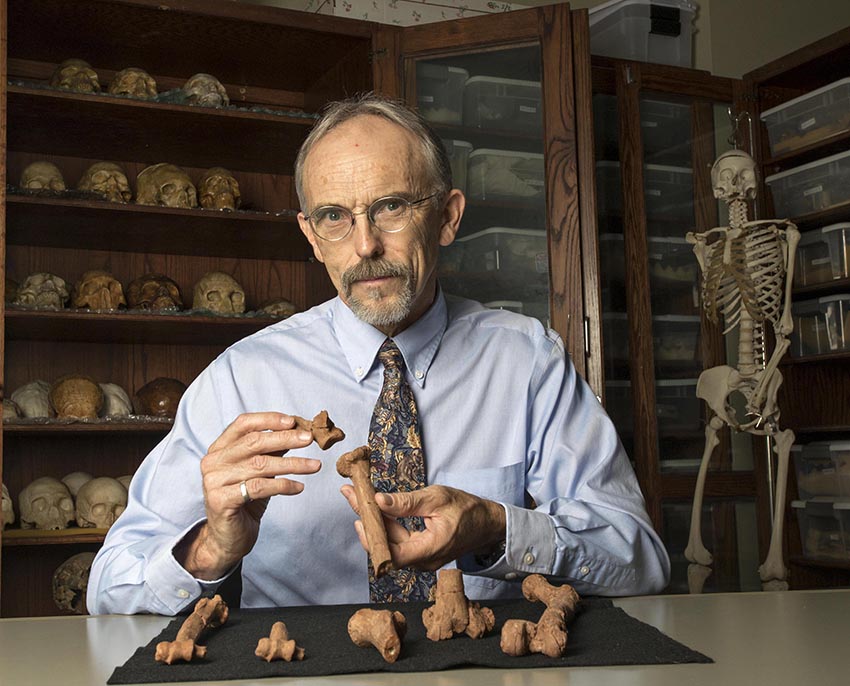UT researchers have resolved the mystery of how humanity’s most famous ancestor died.
In a study published Aug. 29 in the journal Nature and led by UT anthropology professor John Kappelman, researchers discovered that Lucy likely died by falling from a tree. Her cause of death, which has long been a contentious issue among paleontologists, suggests that human ancestors may have been tree-dwellers.
Lucy, a bipedal, upright-walking hominid of species Australopithecus afarensis, was discovered in Ethiopia’s Afar Triangle in 1974. The fossil, estimated to be approximately 3.2 million years old, is relatively complete and has gained fame for being the earliest discovered human ancestor.
“We think she’s either an ancestor or a cousin of humanity,” said Richard Ketcham, UT geosciences professor and co-author of the study. “She was such an outstanding fossil because of her completeness — they found 40 percent of her bones, so this offered a rare chance to study aspects that need the whole body to be understood. It helped answer questions of when human ancestors started walking upright.”
The fossil toured the U.S. and visited the Jackson School of Geosciences in 2008, where Kappelman put it through a high-energy CT scanner. The Department of Radio-Television-Film helped create detailed 3-D images of Lucy’s bones.
“I took those files and put them into a program called Maya,” said Wiley Akins, a radio-television-film lecturer and 3-D animator. “I animated them, and we started with the original positioning of all the different parts of bone, as they were in the fossil, and we reconstructed the humerus to its pre-injury state.”
Kappelman said the images revealed what looked to be a compressive fracture in Lucy’s humerus, or upper arm bone, which tends to result from falling from great heights. Orthopedic surgeons from the Austin Bone & Joint Clinic confirmed the fracture diagnosis.
“We identified a subset of fractures on the bones that represent bone-to-bone, high-energy impacts at several of her joints,” Kappelman said. “The geometry of these fractures match those seen in clinical cases in modern humans.”
He said other fractures found in the images suggested that Lucy spread out her arms to protect herself during the fall.
“Our hypothesis, as based on the clinical medical literature, suggests that she stretched out her arms at the moment of impact in an attempt to break her fall,” Kappelman said. “That tells us that Lucy was conscious at the point of impact, at that instant, in the time right before her death.”
Because Lucy was found in a low-elevation area without cliffs, Kappelman said he concluded that she most likely died by falling out of a tree. This supported a hypothesis that Lucy may have slept in trees or climbed upward to hide from predators, a hypothesis that has been an area of dispute, according to Ketcham.
“It’s easy to tell from a partial skeleton if it walked upright, but much harder to tell if that organism spent a lot of time in trees,” Ketcham said.
Some opponents argued that Lucy’s fractures may not be caused by falling or that her skeleton evolved for walking, not climbing. Kappelman and his team uploaded the images to eLucy.org, where they can be viewed and scrutinized.
“For me, understanding [Lucy’s] death brought her to life for me for the first time,” Kappelman said. “Up until that moment, Lucy was a box of bones, nothing more than that. When I better understood the potential cause of her death, I could picture her broken body lying there at the foot of the tree. I could empathize with her. It’s remarkable to identify with another species that lived over 3 million years ago.”















